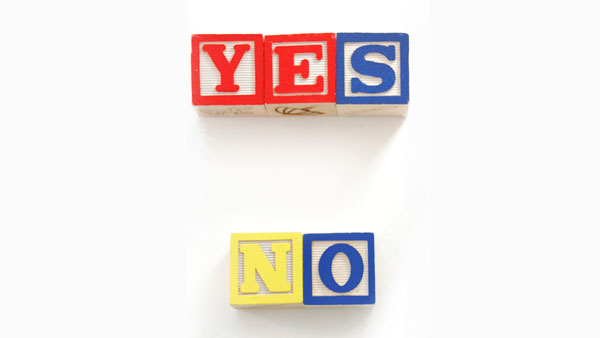As a thought leader, you may be great at telling stories through a presentation deck,…
Do You Have an Enterprise Ready Model?
On my sixth birthday, I received my favorite LEGO set. Like many early LEGO sets, the NASA-inspired spaceship looked most real in a child’s mind. The lunar lander and moon buggy were an impossibly brilliant cobalt blue, and the three LEGO astronauts were somehow even more blocky and ungainly than their moon-hopping counterparts—Buzz Aldrin and Neil Armstrong. But this simple model was sufficient to send my imagination to the moon’s surface during my afternoon playtime.
If you step into a LEGO store today, you’ll notice the level of detail and authenticity have both vastly improved over the past 40 years. The original 1976 Moon Landing set has been replaced by a much more authentic Saturn V rocket and Lunar Lander.
Most children love playing with models. They inspire the imagination, because they appeal to our sense of creativity and our desire for structure.

The best models provide us with a framework that helps us understand,
and perhaps influence, one aspect within a very complex world.
The enterprise world runs on similar models—business process flows, financial forecasting, supply chain logistics, selection systems, marketing campaigns, talent management—the old days of putting a finger to the wind and saying “I think…” are long, long gone. Clients demand an enterprise ready model that can be replicated and supported, a model built with intention and purpose. Unpredictable, freestyle models—such as a tyrannosaurus-helicopter hybrid might be fun to build, but they’re rarely relevant. Enterprise buyers want to look at the box and see exactly what they’re getting, not a loose idea of what could be.
A model that is stronger than its competitors’ has a significant competitive advantage, while those companies with freestyle models constantly struggle to produce results that align with expectations.
If you can model it, you can measure it, and if you can measure it, you can manage it.
Some keynote speakers and authors simply rely on the sizzle of their personality. They artfully dance from point to point and story to story, and the audience leaves thinking everything is awesome. It’s a joy to watch gifted communicators work their craft. Whether on stage or in writing, they present ideas so well that they earn both their audiences’ attention and applause. However, if you look behind the art and the stagecraft, you quickly find a model that’s loosely defined and unvalidated, like the random Mega Blok that doesn’t quite click with the rest of your collection.
That strategy is fine if you’re principally working as a speaker and author, but it’s increasingly out of step with how business leaders evaluate their options and form decisions. Over the past twenty years, business leaders mastered the skills of evidence-based management and execution. Now, they’re extracting knowledge out of “Big Data” and creating predictive statistical models which drive decision making.
You don’t need to master the complex statistics of Hierarchical Linear Modeling, but if you want to deploy your ideas within today’s organization, then you need an enterprise-ready model.
Surprisingly, many thought leaders skip over critical steps in model building.

Structure
An effective model requires intellectual rigor. All of your core concepts need to be clearly defined and described. If you ask ten of your super-fans to define your core concepts, would they use the same language? If so, great—your model passes an essential first test. However, if your key terms “could mean this or it could mean that,” then you’ve got a problem. Some people are using your model to build Lunar Landers while others are trying to build Venetian gondolas from the same set of building blocks.
More importantly, your model’s dimensions each need to be discrete. Overlapping concepts get confusing, and confusing models make it harder to conduct a diagnostic, train a population, or measure results.

Validation
If your model is structured, that means it’s at least internally consistent. That’s great, but your model needs to pass a second test. The model needs to explain something meaningful to businesses, and it needs to do so reliably. Many professions have clearly defined standards for validity and reliability. And the best working thought leadership models have been tested and validated against those standards.
If you can provide a strong technical report on your model’s developmental assessment, you’ll receive a different response than if your model remains unvalidated. Remember, from the perspective of an enterprise buyer, an unvalidated model may be emotionally appealing but it contains significant risk—to the company’s budget, the team’s productivity, and ultimately even the buyer’s career.

Stability
Over the years, I’ve seen thought leaders try to sell amorphous models that look like they’re built out of Silly Putty, in some cases:
- the number of dimensions increase (or decrease) inexplicably;
- key terms appear, disappear, and change names; and
- the model stretches to cover whatever the client seems to want.
These protean models are worthless to sophisticated organizational buyers. The model cannot be measured and held accountable for results. Unless your last name is Covey, you can’t promote your seven dimension model for decades and then suddenly unveil an eighth dimension. It’s neither credible nor persuasive. Therefore, as a thought leader, you need to stabilize your model as quickly as possible. Lock the model, and stick to it.
Some years later, I was at the original LEGOLAND in Denmark, where I saw children gleefully playing in giant 10’ x 10’ pits of LEGOs. Their imagination guided them and they built whatever they wanted. No one could tell them if their freeform model was “right” or “wrong.” However, when I walked over to LEGO MiniLand, I could see the inspired work of master builders: the Kennedy Space Center, Amalienborg Castle, the Acropolis of Athens, all perfectly replicated with painstaking detail at a twentieth their original size. Using the same bricks available to children, the master builders had recreated world-famous landmarks in miniature—truly a testament to the abilities of the right model in the right hands.




